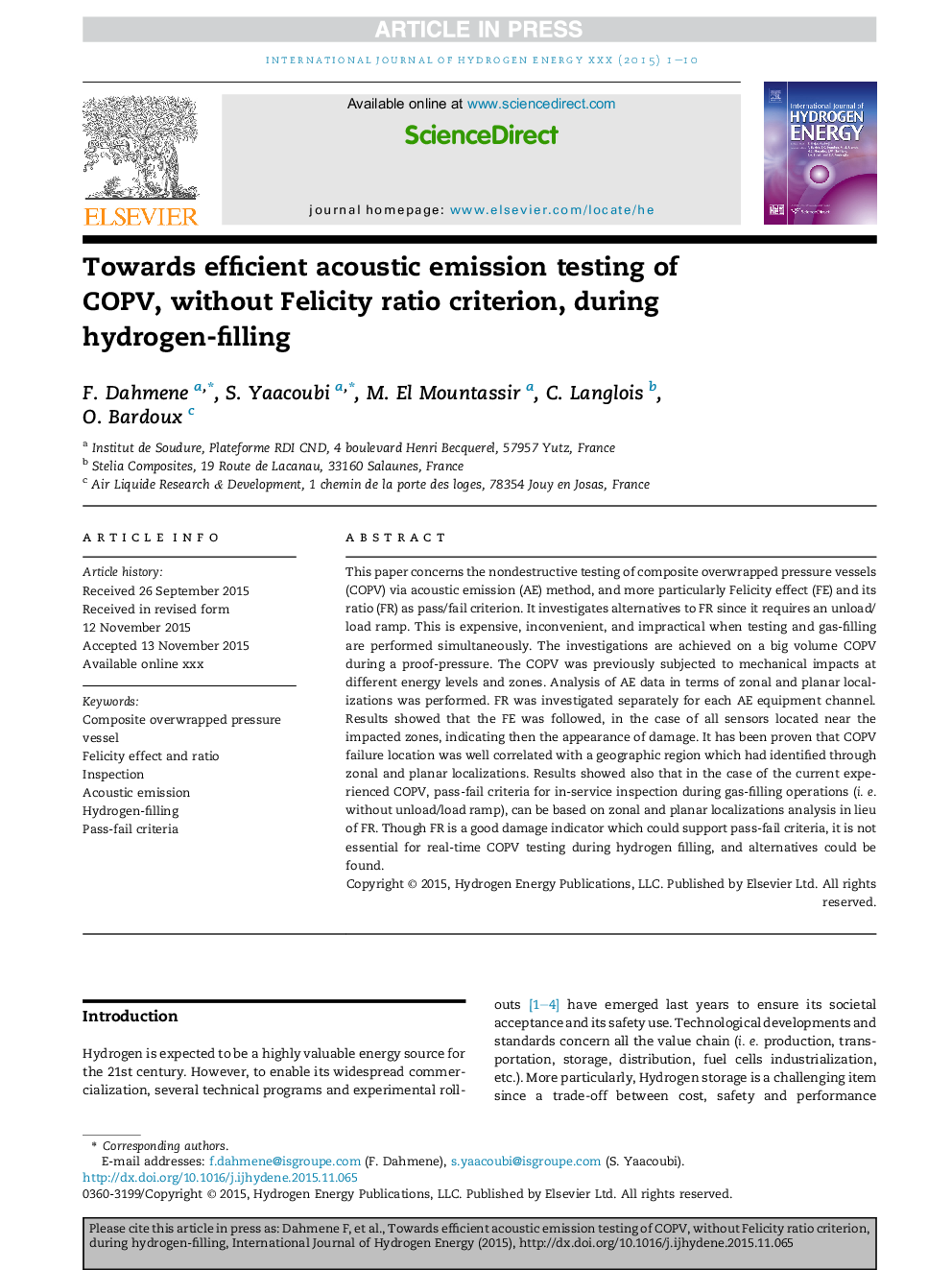| Article ID | Journal | Published Year | Pages | File Type |
|---|---|---|---|---|
| 7713054 | International Journal of Hydrogen Energy | 2016 | 10 Pages |
Abstract
This paper concerns the nondestructive testing of composite overwrapped pressure vessels (COPV) via acoustic emission (AE) method, and more particularly Felicity effect (FE) and its ratio (FR) as pass/fail criterion. It investigates alternatives to FR since it requires an unload/load ramp. This is expensive, inconvenient, and impractical when testing and gas-filling are performed simultaneously. The investigations are achieved on a big volume COPV during a proof-pressure. The COPV was previously subjected to mechanical impacts at different energy levels and zones. Analysis of AE data in terms of zonal and planar localizations was performed. FR was investigated separately for each AE equipment channel. Results showed that the FE was followed, in the case of all sensors located near the impacted zones, indicating then the appearance of damage. It has been proven that COPV failure location was well correlated with a geographic region which had identified through zonal and planar localizations. Results showed also that in the case of the current experienced COPV, pass-fail criteria for in-service inspection during gas-filling operations (i. e. without unload/load ramp), can be based on zonal and planar localizations analysis in lieu of FR. Though FR is a good damage indicator which could support pass-fail criteria, it is not essential for real-time COPV testing during hydrogen filling, and alternatives could be found.
Keywords
Related Topics
Physical Sciences and Engineering
Chemistry
Electrochemistry
Authors
F. Dahmene, S. Yaacoubi, M. El Mountassir, C. Langlois, O. Bardoux,
